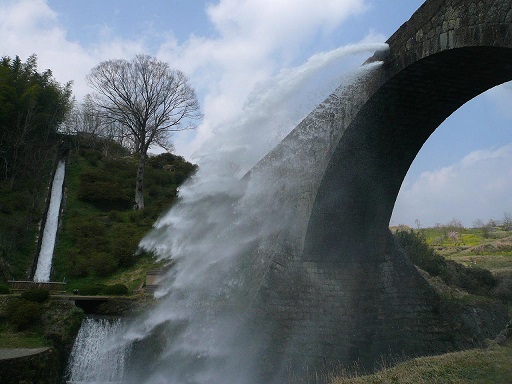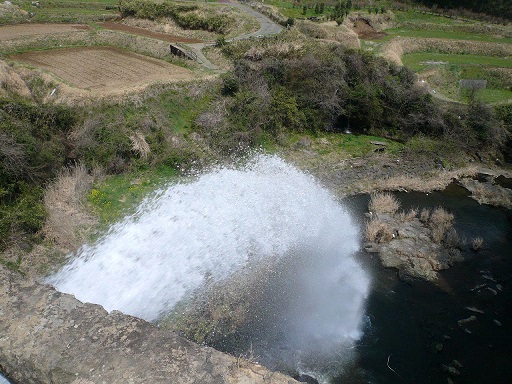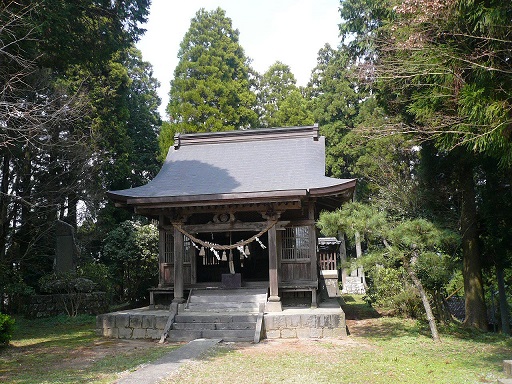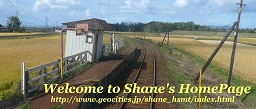|
Stone Arch-Bridges in Kumamoto
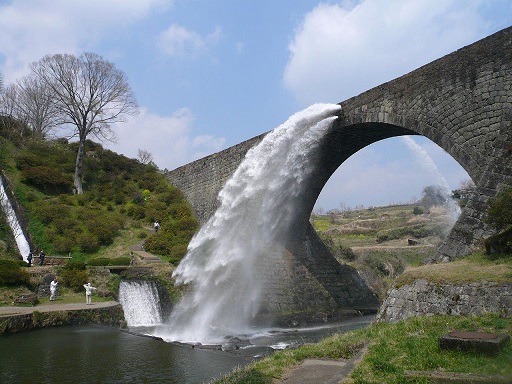
In the south-east of Kumamoto Prefecture, a couple of stone arch-bridges are located. They were mainly built in the nineteenth century. This page shares the information of some of these stone bridges. There are the Okubo Bridge, the Reitai Bridge, the Okedaki Bridge and the Tsujyun Bridge, The Okubo BridgeIf you take a bus from Kumamoto Sakuramachi Bus Terminal to Tomochi-Gakko Mae, you will arrive at Okubo Bus Stop before going into downtown Misato. It takes about one hour and twenty minutes from Kumamoto to Okubo Bus Stop. You will enjoy to see beautiful rural landscapes from a bus. The Okubo Bridge is located to the south of the bus stop. When I visited there in April, cherry trees were in full blossom. 
The Okubo Bridge was built in 1849 by SHINOHARA Zenbei (1787-1856) . You can walk over the Okubo Bridge. The length of the bridge is 19.3 meters.
The rape-flowers were also in fully bloom. The landscape of this area is really beautiful. 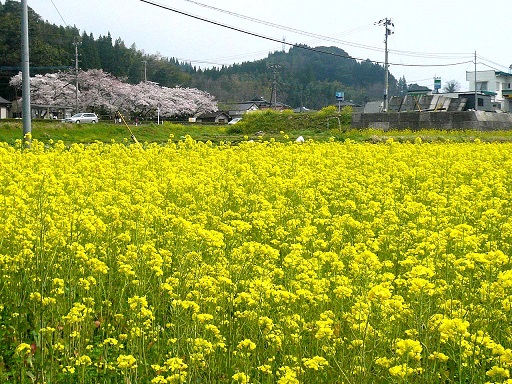
From Okubo Bus Stop, you will take another bus to Hamamachi. It will take you approximately ten minutes from Okubo Bus Stop to Reitai Bridge Bus Stop.
The Reitai Bridge was built over the Midorikawa River in 1847 by SHINOHARA Zenbei. 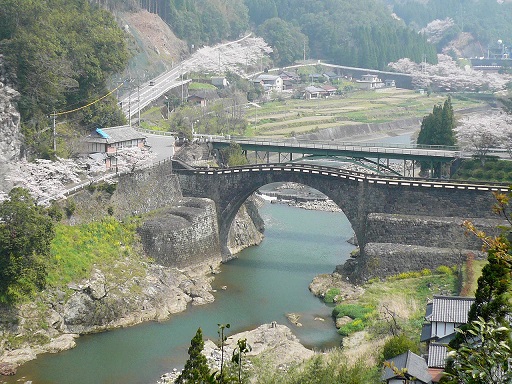
The length of the bridge is ninety meters and the span of the arch is 26 meters. Before the existing stone bridge was built, wooden bridges were destroyed by flood many times. 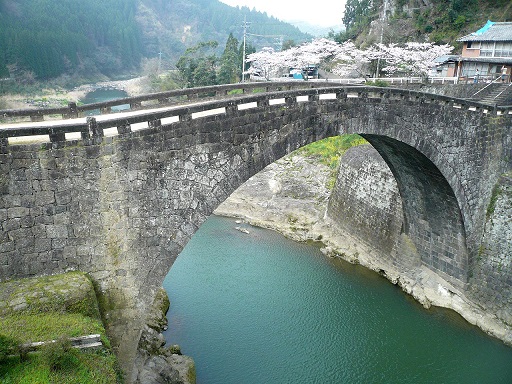
The Reitai Bridge has beautiful and very precise stone masonry. The bridge is designated as an important property of Japan. Masons who built the Reita Bridge moved to Tokyo after the Edo Age (1603-1868) was ended. They built modern western buildings in Tokyo. The Okedaki BridgeThe Okedaki Bridge is located to the south from the Reitai Bridge. It will take approximately one hour on foot. The Okedaki Bridge is located in mountain area. There is an agricultural irrigation channel along the way to the bridge. 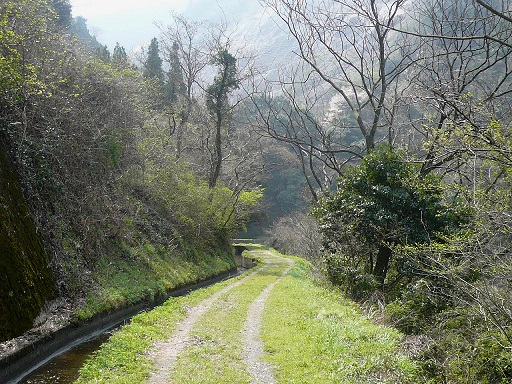
The Cherry blossoms were also full in bloom at the Okedaki Bridge, when I visited. The view of the Okedaki Bridge is very beautiful. 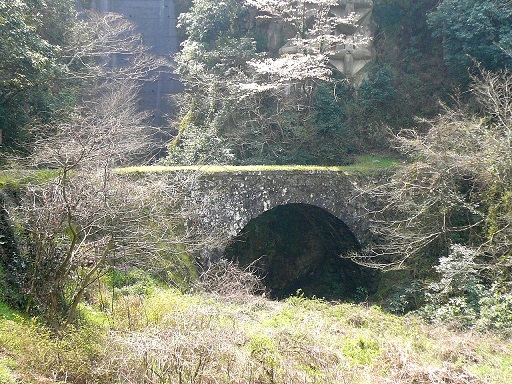
The Okedaki Bridge was built in 1817 for the agricultural irrigation channel to cross over the small stream. The stone bridge is the oldest stone arch bridge in Kumamoto Prefecture. 
The above picture shows the agricultural irrigation channel flows over the bridge. because of the agricultural irrigation channel, approximately sixty-five hectares of new rice fields were developed. The Tsujyun BridgeIf you take another bus from Reitai Bridge Bus Stop to Hamamachi Bus Stop and walk approximately twenty minutes to the east, you will arrive at the Tsujyunkyo Bridge. The Tsujyun Bridge is the biggest stone bridge built in the Edo Age. It is seventy-five meters in length, twenty meters in height. The width of the bridge is approximately six meters. 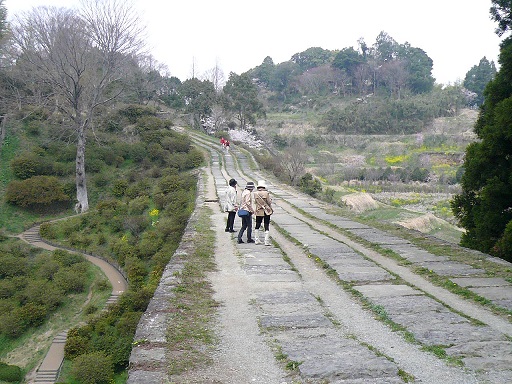
The rural scenery from the bridge is very beautiful and impressive. 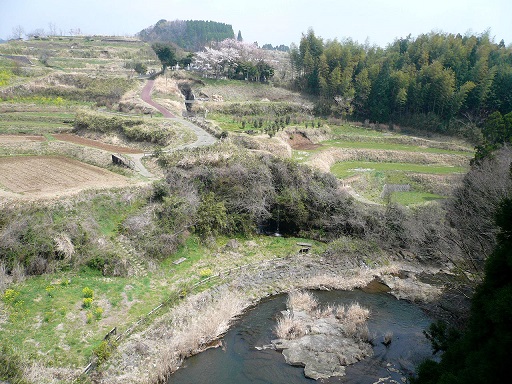
The Tsujyun Bridge was built in 1854 by FUTA Yasunosuke (1801-1873) . His family were at the position of "Soshoya", the village mayors, for generations as well as his farther, FUTA Ichiheiji (1764 - 1810) . FUTA Ichiheiji tried to make the people's life in this area better and offered the feudal domain government the exemption from public services. But, many people were against this offer and he committed suicide to take the responsibility of this matter.FUTA Yasunosuke became the village mayor in 1833 when he was thirty-two years old. FUTA Yasunosuke followed his fathers will and contributed to make this area and people's life better. The Tsujyun Bridge was one of his achievements. The statue of FUTA Yasunosuke is located near the bridge. 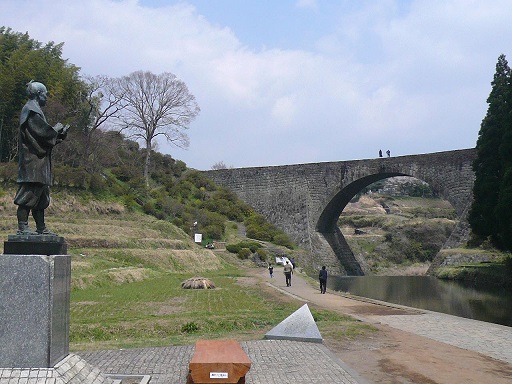
The Tsujyun Bridge was built for the agricultural irrigation channels to pass over the Rogataki River. The agricultural irrigation channels made a hundred 100 hectares of new rice fields. It is designated as an important property of Japan. The discharge of water from the agricultural irrigation channels is possible. The water discharge has been conducted once or twice a day as sightseeing events except the Agricultural season (Usually from the middle of May until the end of July). |
